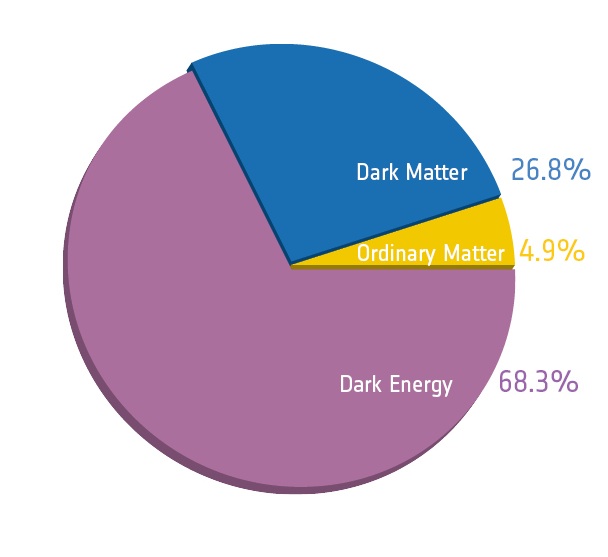
|
Astronomy 123: Cosmology and Our Place in the Universe |

|

|
Astronomy 123: Cosmology and Our Place in the Universe |

|
Astronomy 123 is an introduction to the science of astronomy for non-science majors, with an emphasis on the Universe outside of our galaxy and cosmology. The past 10 years has seen an explosion in our understanding of the contents, formation and evolution of the Universe. Changes in our understanding of fundamental physics, combined with discoveries from space and ground-based telescopes, have led to a radically different model of our place in the Universe and its origins. The field of cosmology is science's newest endeavor into the most basic questions of humankind's existence; where do we come from and what is our fate? Cosmology is the meeting point of observational astronomy, philosophy and particle physics. However, unlike philosophy, cosmology engages Nature providing a foundation based in observation and experience.
The specific goals of this class are (1) to gain an understanding of basic science that underlies Astronomy (the forum is modern cosmology), (2) to understand the properties of the objects that make up our Universe, (3) to formulate a coherent philosophy for interpreting the observational evidence of the hot Big Bang and relating this world-view to new areas of research. In addition, this course traces the history of cosmology in order to explore how the scientific method works and how civilization has gained from the progress of science and technology. The interplay between technology (telescopes, space observatories) and knowledge gained about the Universe is a key theme to the course. And, (4), we study and present comparatively new results that have derived from the new field of Astrobiology and then discuss and consider our place in the Universe.
Other Astronomy courses in the group:
Astr 121: The Solar System
Astr 122: The Birth and Death of Stars
Instructor: James N. Imamura
Office: 444 Willamette Hall or 441 Willamette Hall (try both)
E-mail: imamura@uoregon.edu
Phone: 541-346-5212
Office Hours: MW 3:30 pm-5:00 pm; TuTh, 10:30-noon; or by appointment
Course: ASTR 123, CosmologyRecommended: Astronomy Today, 7th edition, Chaisson & McMillan |
Test 1 = 60 points
Final Examination =
100 points
Test 2 = 60 points
Homework = 10 points per
assignment ===> 60 total points
In lieu of the final examination, a student may opt to turn in a written paper, minimum length 8 pages based on multiple outside references (grading rubric). The paper may be a report on some topic rather than a research paper. It is expected that the student will speak with the Instructor (me) before choosing a topic and writing the paper.
A project (again approved by the instructor) is an acceptable alternative to the in-class final examination. The structure and methodology of the project are negotiable. Total points = 60+60+60+100 = 280 points
The grading scale for each exam will depend upon how the class performs on each exam. However, the grading scale will be no higher than
Week |
|
|
|
|
|
1,2 |
Introduction |
Bennett & Shostak Chapters 1-3, CM Chapters 26,27 | 2013/04/01-2013/04/10 | Topic 1 |
HW 1--due: 2013 April 10 |
3,4 |
World Views of the Universe |
CM Chapter 26 | 2013/04/10,2013/04/15,2013/04/17 |
Topic 2 |
HW 2--due: 2013 April 24 |
due: 2013/
4,5,6 |
History of the Universe |
CM Chapters 26, 27 | 2013/04/22, 2013/04/24, 2013/04/29, 2013/05/01, 2013/05/06,2013/05/08 |
Topic 3 |
HW 3--due: 2013 May 8 |
due: 2013
7 |
Observations and the Fate of the Universe |
CM Chapters 24, 25, 26 | 2013/05/13 |
Topic 4 |
HW 4--due: 2013 May 22 |
X |
The Beginning of Time |
CM Chapter 26 | X |
Topic 6 |
... |
7 |
Drake Equation, Fermi Paradox, and SETI |
Bennett & Shostak, Chapters 11,12 | 2013/05/15 |
Topic 7 |
.... |
8 |
Drake Equation, Fermi Paradox, and SETI |
Bennett & Shostak, Chapters 7,8,9 | 2013/05/20,2013/05/22 |
Topic 7 |
HW 5-- due: 2013 5 June |